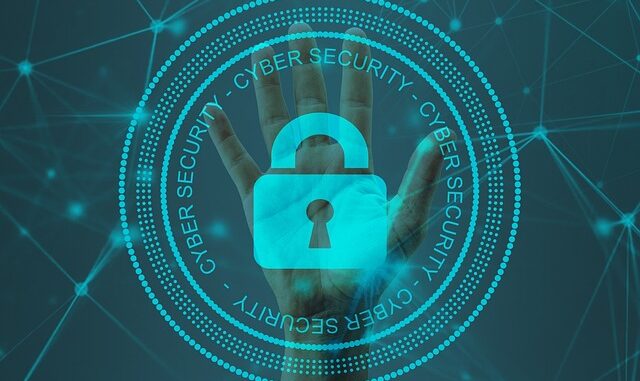
Summary
Ransomware attacks are escalating against healthcare facilities, jeopardizing patient safety and causing operational chaos. These attacks disrupt critical systems, delay treatments, and can even lead to fatalities. Hospitals must prioritize robust cybersecurity measures to protect patient lives and sensitive data.
** Main Story**
Okay, so, ransomware in healthcare, right? It’s become a really serious problem. We’re seeing a huge increase in attacks, and it’s putting patient lives and data at serious risk. These attacks aren’t just annoying, they are encrypting patient records, messing with medical equipment, and basically forcing hospitals to shut down. It’s chaos, especially when every second counts.
Honestly, the frequency, scale, and sophistication, of these attacks is what’s alarming. Plus, now they’re doing the whole ‘double extortion’ thing, which means we need to act fast and in a big way.
The Real Damage
These ransomware attacks have massive consequences for hospitals, and it’s not just about money. Patient care is being jeopardized, resources are stretched thin, and then you have financial and reputational damage on top of that! The delays caused by these attacks can actually be life-threatening. Critical treatments get put on hold, emergency services are diverted, and the risk of medical errors goes way up. And that’s not even getting into the knock-on effects for surrounding areas, its really scary!
I read this report recently – a 2023 one I think? – that actually showed ransomware attacks on healthcare facilities more than doubled between 2016 and 2021. Almost half of them disrupted the delivery of healthcare! They are saying that operations were disrupted for over 2 weeks in some cases! This means cancelled appointments, ambulance diversions, and suddenly everyone’s using paper records again. The likelihood of errors massively increases. A friend of mine, works in a hospital in the city, and she told me that they had to deal with a surge of patients from another nearby hospital that got hit. It’s a domino effect, really.
Why Healthcare is a prime target.
So, why is healthcare such an easy target? A few reasons actually. First off, it’s the data. Medical histories, social security numbers, financial info… it’s all valuable to cybercriminals. They know they can get a good price for it, and that healthcare providers will probably pay a hefty ransom to recover it. It can be a big payday for the attacker, and that is a huge factor. I mean, wouldn’t you target high value targets if you were a criminal?
The urgency of healthcare is a factor too, and what I mean by that is that cybercriminals know that hospitals are under immense pressure to get their systems back up and running ASAP to avoid impacting patient care. Which unfortunately makes them more likely to give in and pay. Then there’s the budget issue; so many healthcare organizations are running on tight budgets, and cybersecurity often ends up on the back burner. Outdated systems, limited resources… it’s a recipe for disaster.
Staffing issues are also a problem. You’ve got high turnover, and inconsistent training which means a lot of people aren’t equipped to spot a phishing scam or other social engineering attacks. It’s a major vulnerability.
How to protect Healthcare
What can be done? Well, hospitals need to get proactive. They need a comprehensive cybersecurity strategy that covers technology, training, and resilience. Think firewalls, intrusion detection, endpoint protection… the works. Regular software updates and patching are also absolutely essential. You can’t leave vulnerabilities lying around.
Training is key here. Every employee needs to be security aware. Spotting phishing attempts should be second nature. Regular audits, penetration testing, multi-factor authentication… all important. Don’t ignore them.
Also, and this is really important, you need an incident response plan. When, not if, an attack happens, you need to know exactly what to do. How to minimize the disruption, safeguard patient care… that’s the goal. Cybersecurity insurance can also help cover the costs of an incident, and that shouldn’t be discounted!
Looking Ahead
Ransomware is a massive, growing problem for healthcare, and there’s no getting around it. Now, more than ever, robust cybersecurity is needed. Hospitals must make it a priority to invest in better defenses, train their staff, and create solid contingency plans. It’s not just about protecting systems, it’s about protecting patients. So, by proactively strengthening their cybersecurity, healthcare organizations can mitigate the devastating impact of these attacks and keep providing the essential care communities depend on. And remember, it’s not a one-time fix. The threat landscape is always changing, so we need to be vigilant and adapt our strategies constantly to stay ahead of whatever comes next.


The increase in double extortion tactics is particularly concerning. What specific measures, beyond standard cybersecurity protocols, can healthcare facilities implement to protect patient data and prevent its exploitation in these scenarios?
Great point! Beyond the usual, data segmentation and tokenization are crucial. By isolating sensitive data and replacing it with non-sensitive equivalents, we limit the impact of a breach. Also, investing in advanced threat intelligence helps anticipate and prevent double extortion attempts. What are your thoughts on deception technologies as a proactive measure?
Editor: MedTechNews.Uk
Thank you to our Sponsor Esdebe
“Cybersecurity insurance, huh? So, basically, we’re betting on getting hacked. Maybe we should invest in better security *and* some popcorn for the show when it inevitably happens. Anyone know a good cyber-attack livestream?”